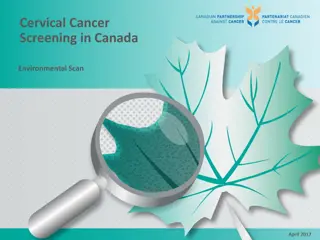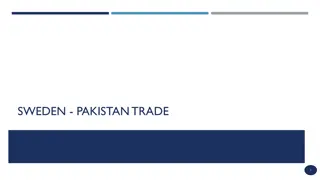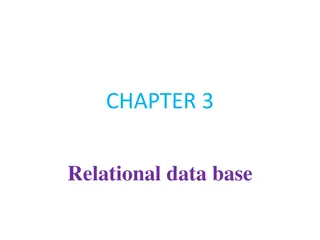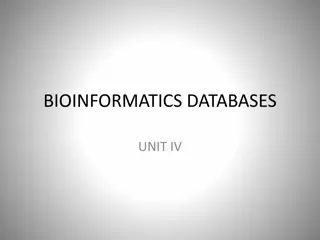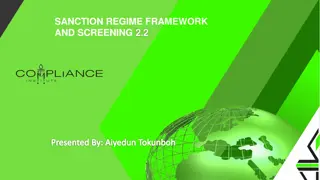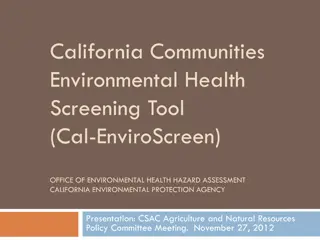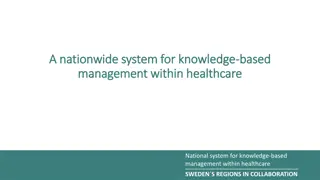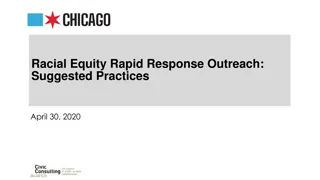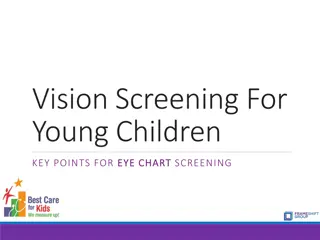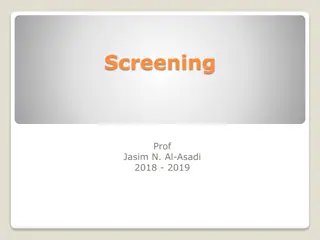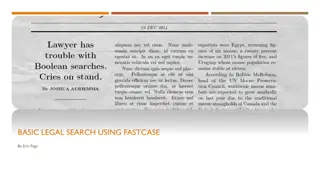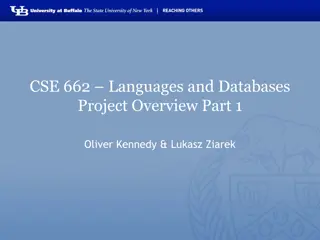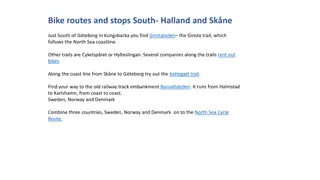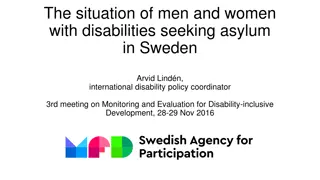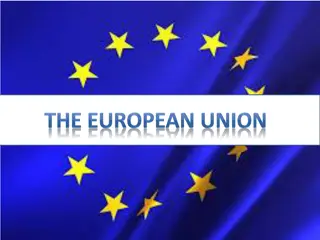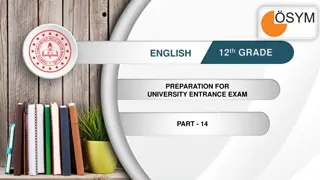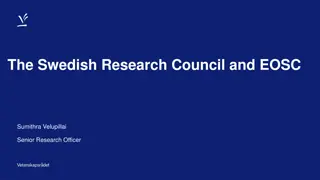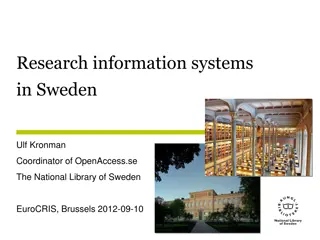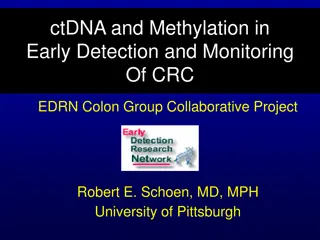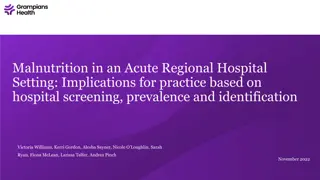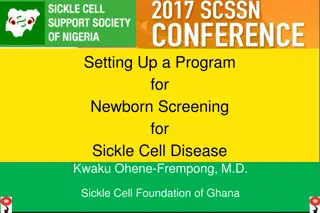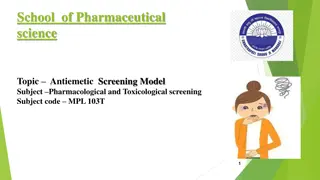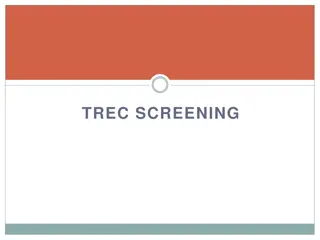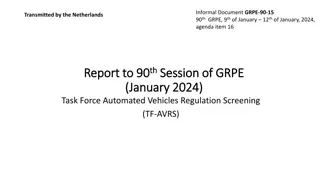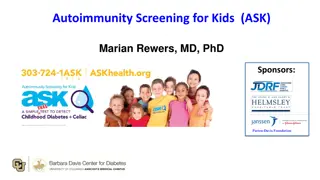Environmental Monitoring and Screening Databases in Sweden
This content delves into the monitoring and screening databases managed by Katarina Hansson at IVL, focusing on chemicals, emissions, and national environmental data in Sweden. It covers the use of national databases, biota databases for pollutants in biological samples, and screening studies involving various substances across different matrices. The data collected includes air quality, freshwater, coastal areas, agricultural lands, wetlands, and toxic pollutants. The overview also highlights the widespread occurrence of emerging substances in air, sediment, biota, and sludge based on IVL's screening studies.
Download Presentation

Please find below an Image/Link to download the presentation.
The content on the website is provided AS IS for your information and personal use only. It may not be sold, licensed, or shared on other websites without obtaining consent from the author. Download presentation by click this link. If you encounter any issues during the download, it is possible that the publisher has removed the file from their server.
E N D
Presentation Transcript
Swedish databases- Screening database himmel_moln_ChF abborre_508px_jpg Katarina Hansson
Work with chemicals at IVL Monitoring and screening Data host-national databases Emission measurements Chemical analysis SMED (Swedish Environmental Emissions Data) Modelling Development of guideline documents EU-projects (e.g. COHIBA, SOCOPSE) National research programmes (e.g. ChEmiTecs) Katarina Hansson, 2011-04-21
National monitoring data - data host The Swedish EPA, as the funding body of the Swedish national environmental monitoring programme, owns the data collected A data host stores, reviews, compiles and makes the environmental monitoring data available for the users The major subject areas are: Air Freshwater Seas and coastal areas Agricultural lands Wetlands Toxic pollutants Health-related environmental monitoring and bathing water www.naturvardsverket.se Katarina Hansson, 2011-04-21
Biota database - Metals and organic pollutants in biological samples National monitoring Biota database http://www.balticseabird.com/lankar.htm Metals, Hg PCB PBDE DDT HCH TBT PAH Dioxins/furans Fish Blue mussels Guillemot eggs Elk Reindeer Otter etc. Long series: Frequent measurements Same sampling sites Same species Katarina Hansson, 2011-04-21
Screening database The database contain both national and regional data (http://www3.ivl.se/miljo/db/IVL_screening_registersida.htm) approximately 660 substances or substance groups 100 000 samples in the database results from 100 different studies 16 matrixes Katarina Hansson, 2011-04-21
Screening study Measurements of a chemical in approx. 50 samples divided in different matrices The sampling strategy depends on the chemical Katarina Hansson, 2011-04-21
Overview Emerging substances widespread occurrence AIR SEDIM BIOTA SLUDGE 100% 100% 100% 100% Perfluorooctane sulfonate (PFOS) 92% 50% 100% 100% Tetrabromobiphenol-A (TBBPA) 100% 100% 100% Dicyclohexylamine (DCHA) 92% 76% 100% 50% 1,2,5,6,9,10-hexabromocyclododecane (HBCDD) 100% 69% 31% 100% Bis(2-ethylhexyl)phthalate (DEHP) 83% 62% 0% 100% Di-isononyl phtalate (DINP) Examples from IVLs screening studies Katarina Hansson, 2011-04-21
Screening database The data is delivered in Excel forms The database is increasing with approximately 10 new studies each year The screening reports are published together with the data The data delivered to the database is of varying quality-some information may be missing It is possible to search information in the database substance, matrix or site Analytical methods are not yet in the database-the information may be achieved from the reports All data is available for the public The database is in Swedish Katarina Hansson, 2011-04-21
What is the data in the biota database and screening database used for? Internationally: International reporting, ICES (only data from biota database) WISE WFD PS NORMAN Nationally: Public authorities, such as the Swedish EPA, Swedish Chemical Agency (KemI) Local authorities Scientists Students Katarina Hansson, 2011-04-21
Thank you! Katarina Hansson katarina.hansson@ivl.se Katarina Hansson, 2011-04-21



